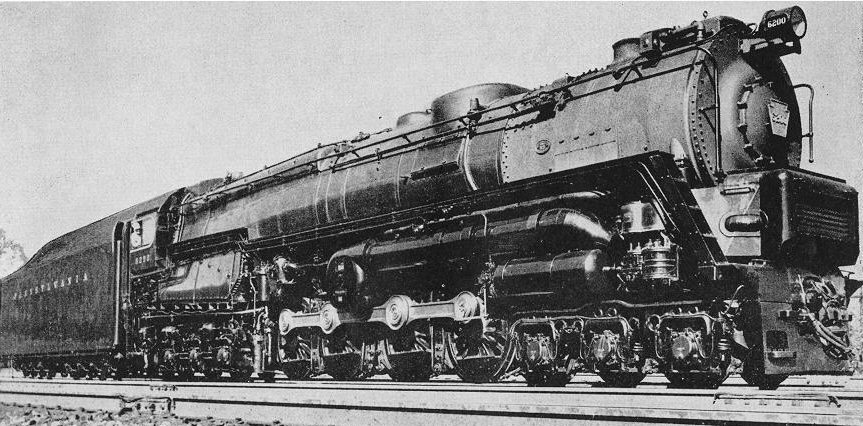Dinorius_Redundicus
kuid 68213
Just found myself musing on this question, but I hasten to say I'm no expert on loco design or history.
When I think about steam locos, the image that comes to mind is always one of a big water boiler tank, large, spoked driving wheels and external pistons driving them by rods connected to the wheels. The cab is usually to the rear of the boiler. Apart from different numbers of wheels and superficial attempts at streamlining, that basic design didn't change until steam was replaced by diesel and electric locos (or did it?). Why didn't this 1800's arrangement evolve?

I can understand the need for the water boiler on the loco - you can't have steam without water and the best place for it is on the loco because the weight adds to traction. But were other aspects of the design really fixed by the physics of steam locomotion? Did the driving wheels really need to be so large in diameter and spoked, driven by pistons and heavy rods? Did all that driving gear need to be external and replicated on both sides? Could the efficiency of steam locos have been improved by replacing the heavy reciprocating pistons and rods with lighter rotating components like turbines, drive shafts and gears? Did the cab need to be at the back?
When I think about steam locos, the image that comes to mind is always one of a big water boiler tank, large, spoked driving wheels and external pistons driving them by rods connected to the wheels. The cab is usually to the rear of the boiler. Apart from different numbers of wheels and superficial attempts at streamlining, that basic design didn't change until steam was replaced by diesel and electric locos (or did it?). Why didn't this 1800's arrangement evolve?

I can understand the need for the water boiler on the loco - you can't have steam without water and the best place for it is on the loco because the weight adds to traction. But were other aspects of the design really fixed by the physics of steam locomotion? Did the driving wheels really need to be so large in diameter and spoked, driven by pistons and heavy rods? Did all that driving gear need to be external and replicated on both sides? Could the efficiency of steam locos have been improved by replacing the heavy reciprocating pistons and rods with lighter rotating components like turbines, drive shafts and gears? Did the cab need to be at the back?




